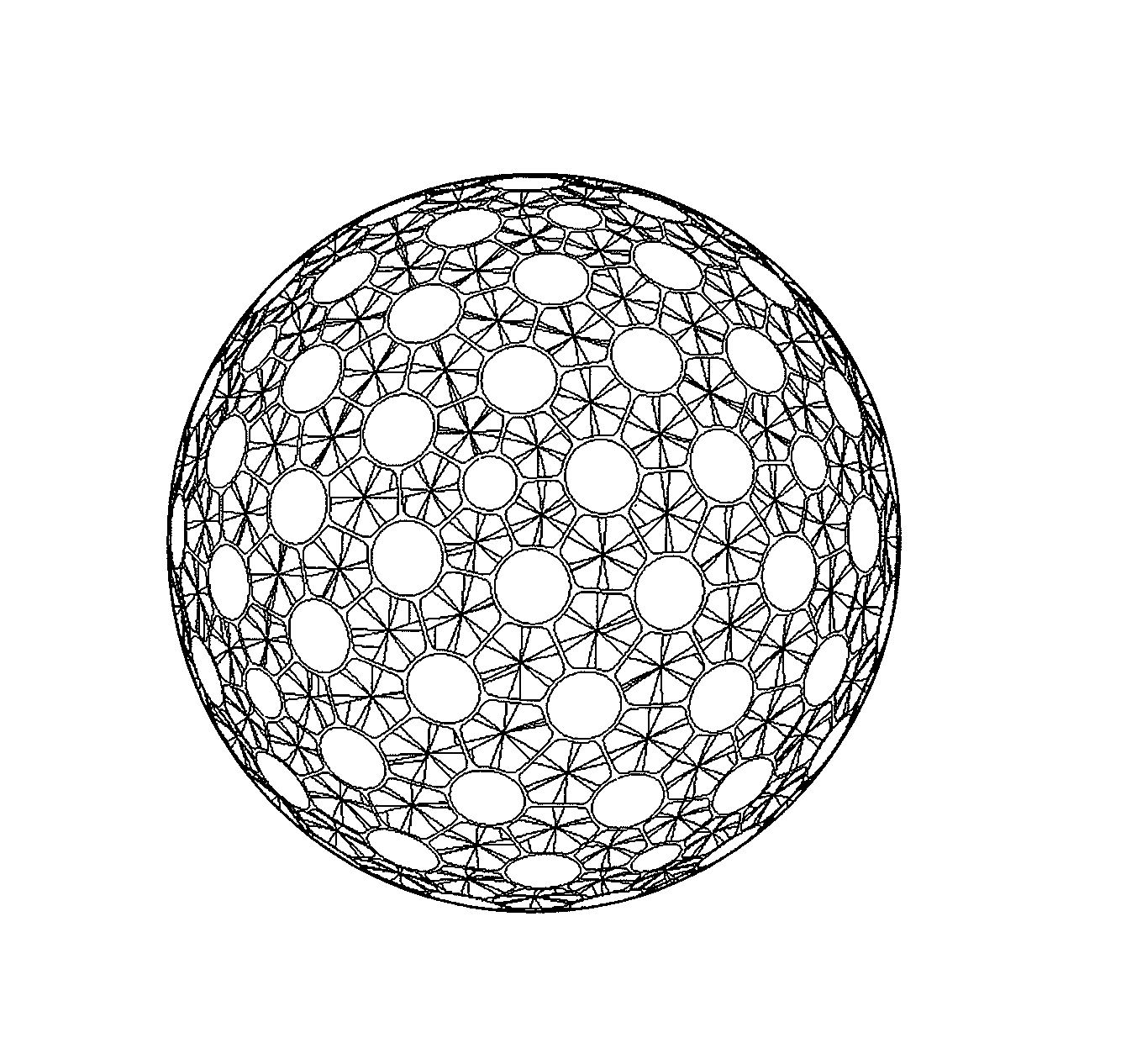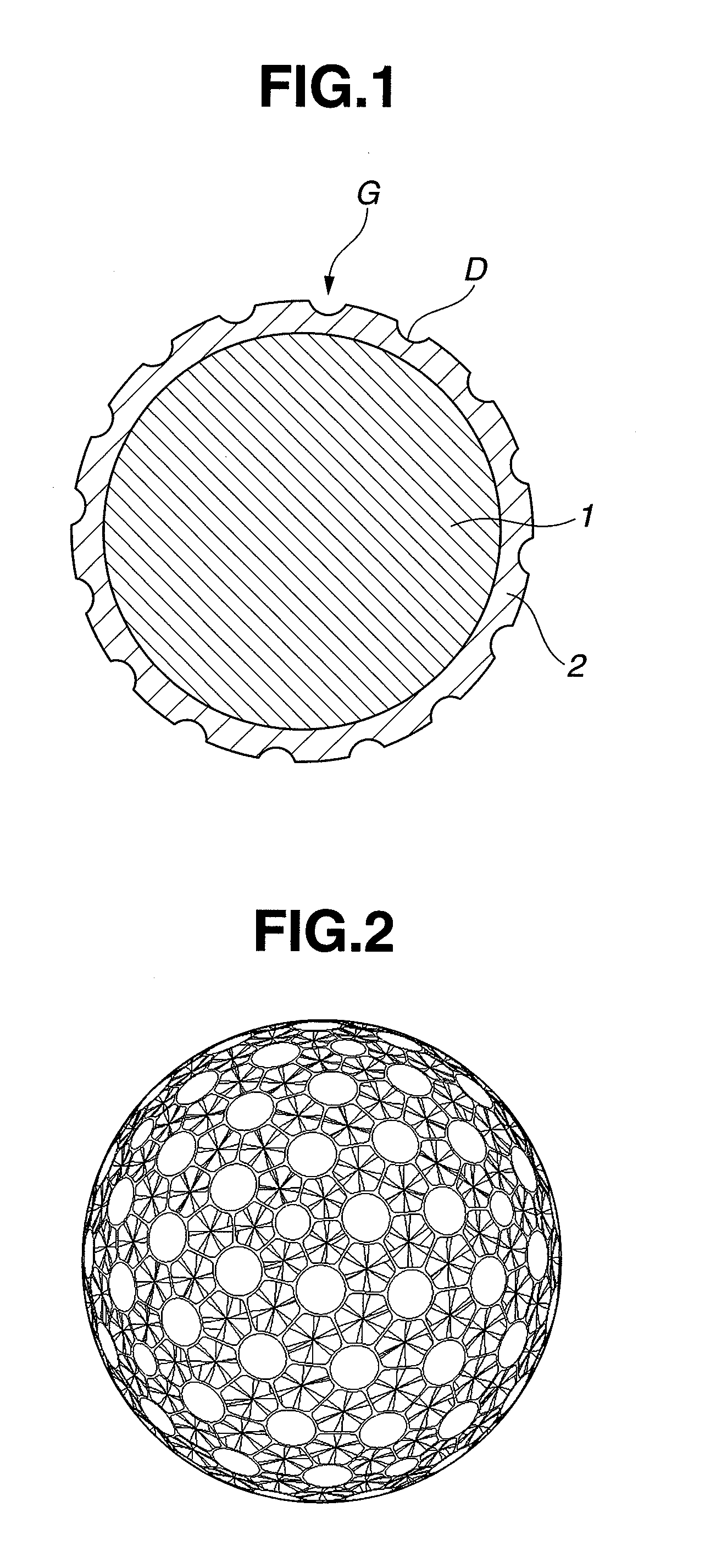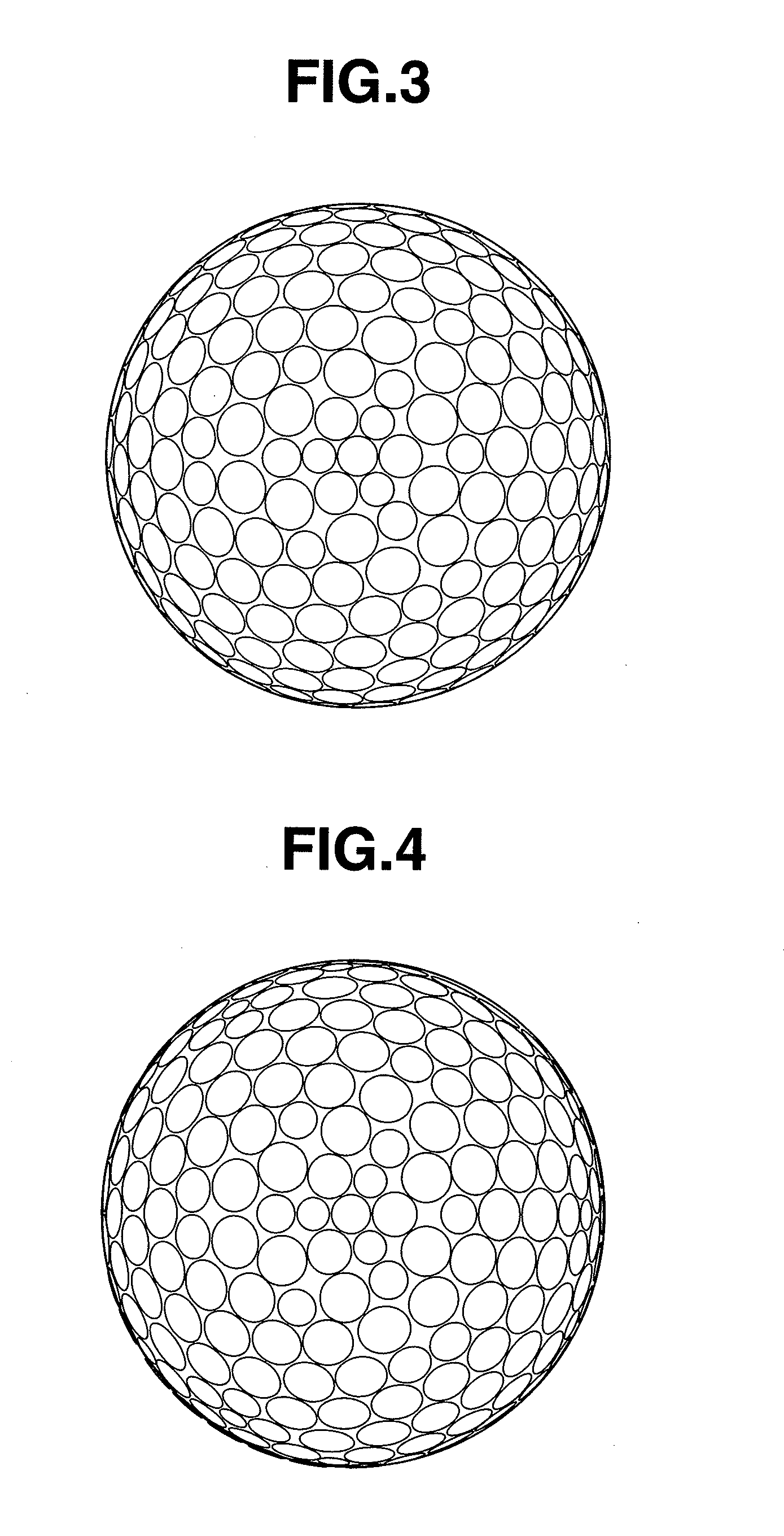Color golf ball
a golf ball and fluorescent technology, applied in the field of color golf balls, can solve the problems of insufficient color ball technique, lack of high-quality feel and resistance to color change, and subdued appearance of the ball, so as to preserve the visibility, brightness and high-quality feel of the ball, and the effect of inferior color ton
- Summary
- Abstract
- Description
- Claims
- Application Information
AI Technical Summary
Benefits of technology
Problems solved by technology
Method used
Image
Examples
examples
[0065]The following examples of the invention and Comparative Examples are provided by way of illustration and not by way of limitation.
examples 1 to 3
, Comparative Examples 1 to 7
[0066]A rubber composition having a common formulation in the examples of the invention and the comparative examples was prepared, then masticated with a kneader or a roll mill, following which cores were fabricated under specific vulcanizing conditions, which shown in Table 1. The core was then set in a mold and the cover material shown in Table 2 was injection-molded over the core, thereby giving two-piece colored golf balls according to the examples of the invention and the comparative examples. The numbers shown in the core formulation and the resin mixture formulations in Tables 1 and 2 indicate parts by weight.
[0067]
TABLE 1Core FormulationWhite coreRed corePolybutadiene rubber100100Zinc acrylate2929Peroxide1.21.2Antioxidant0.10.1Zinc oxide18.418.4Zinc salt of0.20.2pentacholorothiophenolRed pigment0.08
[0068]The rubber was vulcanized for 15 minutes at 155° C. The above-mentioned peroxide was a mixture of 1,1-di(t-butylperoxy)cyclohexane and silica, w...
PUM
 Login to View More
Login to View More Abstract
Description
Claims
Application Information
 Login to View More
Login to View More - R&D
- Intellectual Property
- Life Sciences
- Materials
- Tech Scout
- Unparalleled Data Quality
- Higher Quality Content
- 60% Fewer Hallucinations
Browse by: Latest US Patents, China's latest patents, Technical Efficacy Thesaurus, Application Domain, Technology Topic, Popular Technical Reports.
© 2025 PatSnap. All rights reserved.Legal|Privacy policy|Modern Slavery Act Transparency Statement|Sitemap|About US| Contact US: help@patsnap.com



